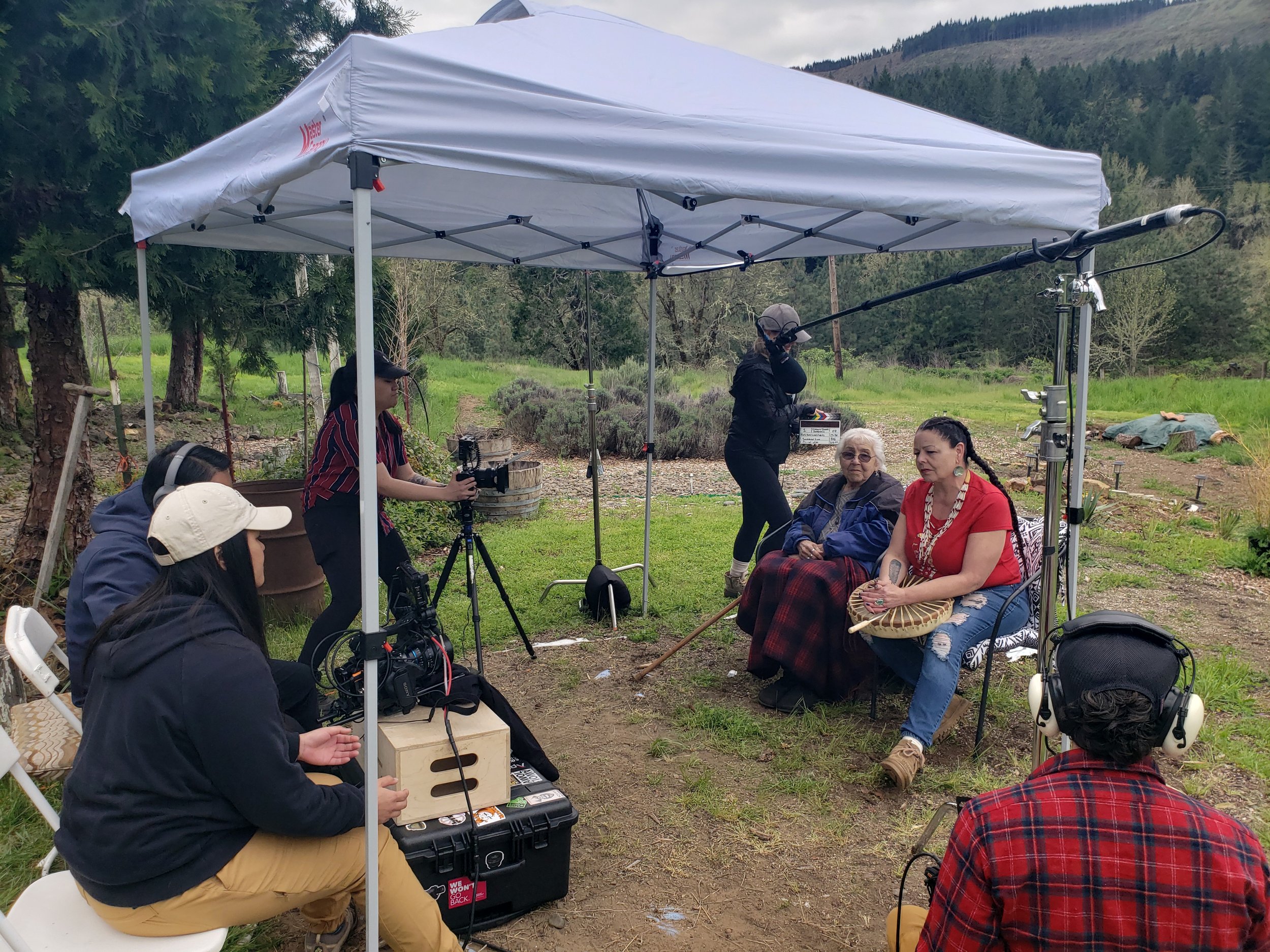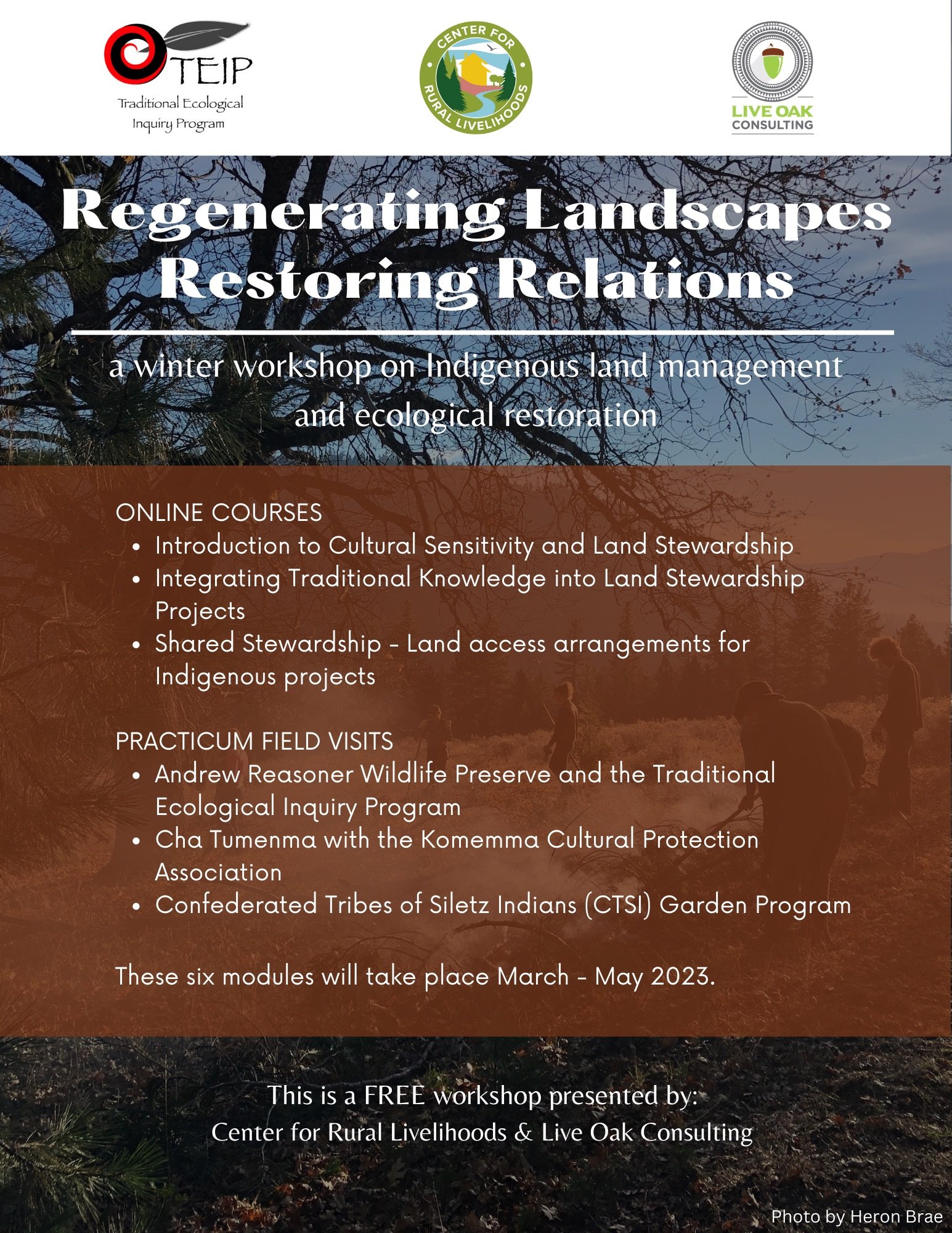
Traditional and Ecological Land Stewardship
CRL’s campus lies within the traditional territories of the Komemma Band of the Kalapuya people. The 12 bands of the Kalapuya utilized a broad range of horticultural practices to maintain a highly biodiverse and climate resilient agroecology that included a mosaic of oak woodlands and savannas, prairies, wetlands, and bottomland forests.
The Euro-American conquest of the region in the middle of the nineteenth century led to forced displacements, land seizures, warfare, the prohibition of traditional practices, and acts of genocide – thus devastating the Indigenous traditions of land care and people care that had evolved since time immemorial. (See CRL’s statement on Settler Colonialism featured in Eugene Weekly)
Today, through generations of struggle, Tribal and Indigenous people have reclaimed sovereignty and begun to re-possess their ancestral lands. They continue to both maintain and rebuild their ecological and cultural practices – alongside a modern need to repair broken ecosystems and mitigate impacts of climate change.
A resurgence in the use of cultural and prescribed fire, the survival of plant and animal species formerly on the brink (including recent protection and restoration of salmon and lamprey), the revival of agroforestry, and new collaborative ecological restoration projects are all testaments to this revitalization.
CRL contributes to the process of ecological and cultural revitalization by supporting traditional land stewardship and Indigenous peoples who are working to heal the land. We collaborate with Komemma Cultural Protection Association (KCPA), an Indigenous-led organization devoted to promoting the ecological and cultural traditions of the Kalapuya People, by co-hosting biochar workshops, co-producing videos, hosting retreats, and more.
In 2024, KCPA acquired 207 acres within the ancestral territory of the Komemma. CRL works with KCPA to support land stewardship and education through on-site initiatives – including hosting and directing Americorps and youth work crews, supporting educational projects, and leveraging our network of restoration forestry practitioners. (Restoration Forestry integrates agroforestry, eco-forestry, and ecological restoration – for more information, see the CRL Restoration Forestry Assessment.)
Ecoforestry Podcast with our Forester Abel Kloster on Coast Range Radio
Andrew and Abel discuss the ecoforestry practices used at Aprovecho (now Center for Rural Livelihoods) to manage the forest there towards an old growth character forest. They discuss how this type of intentional land management connects to indigenous and climate justice. They also go into the history of indigenous genocide in Oregon and its connection to the landscape change from oak savanna to primarily Douglas fir forest at the site.
In 2023, CRL brought together several Indigenous partners to lead the “Regenerating Landscapes, Restoring Relations” workshop, where more than 100 individuals, organizations, and local agencies explored how native and non-native partners can work together to support traditional land stewardship.




